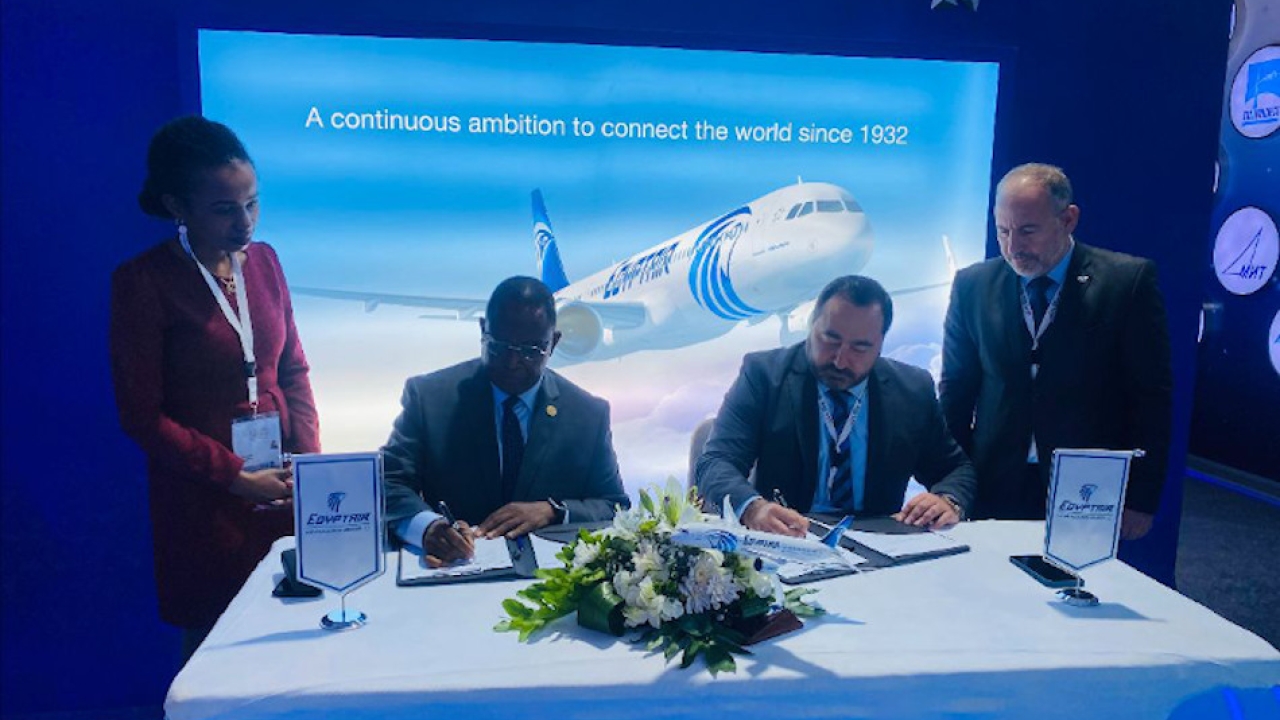Aviation Africa: Emirates highlights why it focuses on human factors
Dr. Nicklas Dahlstrom, director of human factors for Emirates Airline, addressing the Aviation Africa conference in Dubai today, told the audience that human factors training is essential, especially when people from different cultures work together.

With an amusing and informative presentation with serious undertones, he described cultural traits and the importance of telling stories rather than just focusing on numbers.
In order to address aviation safety in Africa, he suggested looking at the problem as one of comparative risk.
“Aviation will get safer as safety of the whole society gets safer,” he said.
“If we’re going to understand the risk in African aviation we’re going to have to put it in the context of society as a whole.”
Within an airline environment, others need to have training too, not just pilots – so you need integration of human factor training for all parties.
Discussing pilot error, he referred to the cockpit of the B17, where there were two big switches, one for the gear and one for flaps – “looking exactly the same and close to each other.”
Thus gear-up landings were common.
“Is it the pilot’s fault?” he asked. “No, it’s the signs… so [the industry] put a wheel on the undercarriage lever and a flap on the flap lever –and the problem [to a great extent] went away.”
Five Pillars
He said the pillars of crew resource management (CRM) are Communications, Leadership, Decision Making, Situational Awareness and Workload Management. “CRM is for pilots as well as air traffic controllers and others – but does it work?” he asked.
“The answer is yes – but you have to keep doing it or the errors creep back in,” he said.
And remember, he added, “Culture is reflected by everything beyond immediate physiological needs. But how does culture affect behaviour?”
Turning back to Emirates, he said, “We’re a very multicultural company with 4,000 pilots from more than 120 countries.
“It’s a very big mix of people, so how do we make this work? We do CRM for flight crew, cabin crew, combined CRM, train the trainers, dispatchers and ATCOs all have CRM too.”
It’s not only about safety – it’s about safety and efficiency if you do it right, he said.
Dahlstrom showed an internal survey that illustrated that almost all of Emirates’ pilots said that professional culture (as a pilot) overrides national culture, and that “I feel respected and valued by fellow crew members”.
He listed the Five Pillars of a Safety Culture as:
Informed, Reporting, Just, Flexible and Learning
Do Tell Stories
Dahlstrom then stressed how effective stories/anecdotes are, and how Africa has a great tradition of storytelling. “Too often when we train we only show numbers, and there is a fine tradition of stories in Africa,” he said.
“You have a fabulous effect from telling stories and they hold meaning. You can talk engine parameters, but story of an engine failure gives it context. We must use stories more.”
He also said that airlines and other stakeholders: “Need to learn from things that go well – we can scare people with the bad stories and yes that has a function, but we need to learn from what goes right.”
You also need to have warning signs for things. He gave the analogy of turkeys: all the data tells them it’s safe, life is great, and then they get cooked!
“So don't ask ‘should be fine, done it before’, ask ‘what might go wrong today’ – that’s a safety culture,” said Dahlstrom.
“So the promise of aviation in Africa can be fulfilled but I think human factors training will be a very important component of that.”
A Q&A session followed. Victoria Moores, air transport editor of “African Aerospace”, asked why after the LAM Mozambique Embraer 195 accident there wasn’t a response to ensure there were two pilots in the cockpit at all times, whereas EASA was quick to react after the Germanwings' accident.
Dahlstrom saw the point, but also said: “We have come to believe that accidents won’t happen at all. But they will when you’re dealing with complex systems.
“There is a risk that more risk is presented through acting in a certain way after one rare event.
“You can introduce another higher risk – so we need to see the limitations of what we do.”
Stay up to date
Subscribe to the free Times Aerospace newsletter and receive the latest content every week. We'll never share your email address.


